We use cookies to improve the services we offer you. By continuing to browse this site, you consent to keep them in accordance with our Privacy Policy.
×We use cookies to improve the services we offer you. By continuing to browse this site, you consent to keep them in accordance with our Privacy Policy.
× 305
305
 11 min
11 min

Affiliate marketing is a moneymaker for marketers and brands alike — especially in the US, which is responsible for over 50% of all affiliate sales.
But if you want to make the most of affiliate marketing, you need to include videos in your content strategy.
We’ll walk through everything you need to know about videos in affiliate marketing, including why they’re so necessary, the types of videos to include in your strategy, and how to keep improving with insights from Tapfiliate (the easiest affiliate marketing software).
People love watching videos — it’s easier content to consume than skimming long descriptions or website content. We know that thanks to Statista, who found that over three billion people watched videos (streamed or downloaded) in the past three years.
But does mass consumption of video content always lead to sales? WebFX says so — they shared that businesses that use video marketing see 35% higher conversion rates than those that don’t.
Not sure where to start with affiliate marketing videos? We’ve rounded up some ideas, with special attention to effective video types based on your industry.
For example, unboxing videos are great for e-commerce brands in niches like fashion, jewelry, home decor, and more. SaaS brands benefit most from affiliate marketing videos that help their target understand how to use their product — video tutorials are an ideal strategy.
Let’s break down some of the most common affiliate marketing videos and examples of our favorites:
Product review videos document how a brand’s product works, often with an affiliate using the product themselves. They might introduce the brand and product first, then get into how it works and why the target audience would like it (or not like it).
Here are some components to include in a product review video:
To maximize the impact of your product review videos, it’s essential to present them on a professional and visually appealing YouTube channel. Learn how to create a YouTube banner to enhance your channel’s branding and attract more viewers. A well-designed banner makes your channel look more credible and helps in retaining your audience’s attention.
One example of a solid product review video is this video of the Omorc 5.5L air fryer, reviewed by a food influencer affiliate, Adam Garratt. He walks through the air fryer’s cooking settings, how to use it, and comments on its pros and cons from his perspective. And he added a $30 off coupon code in the video’s description.
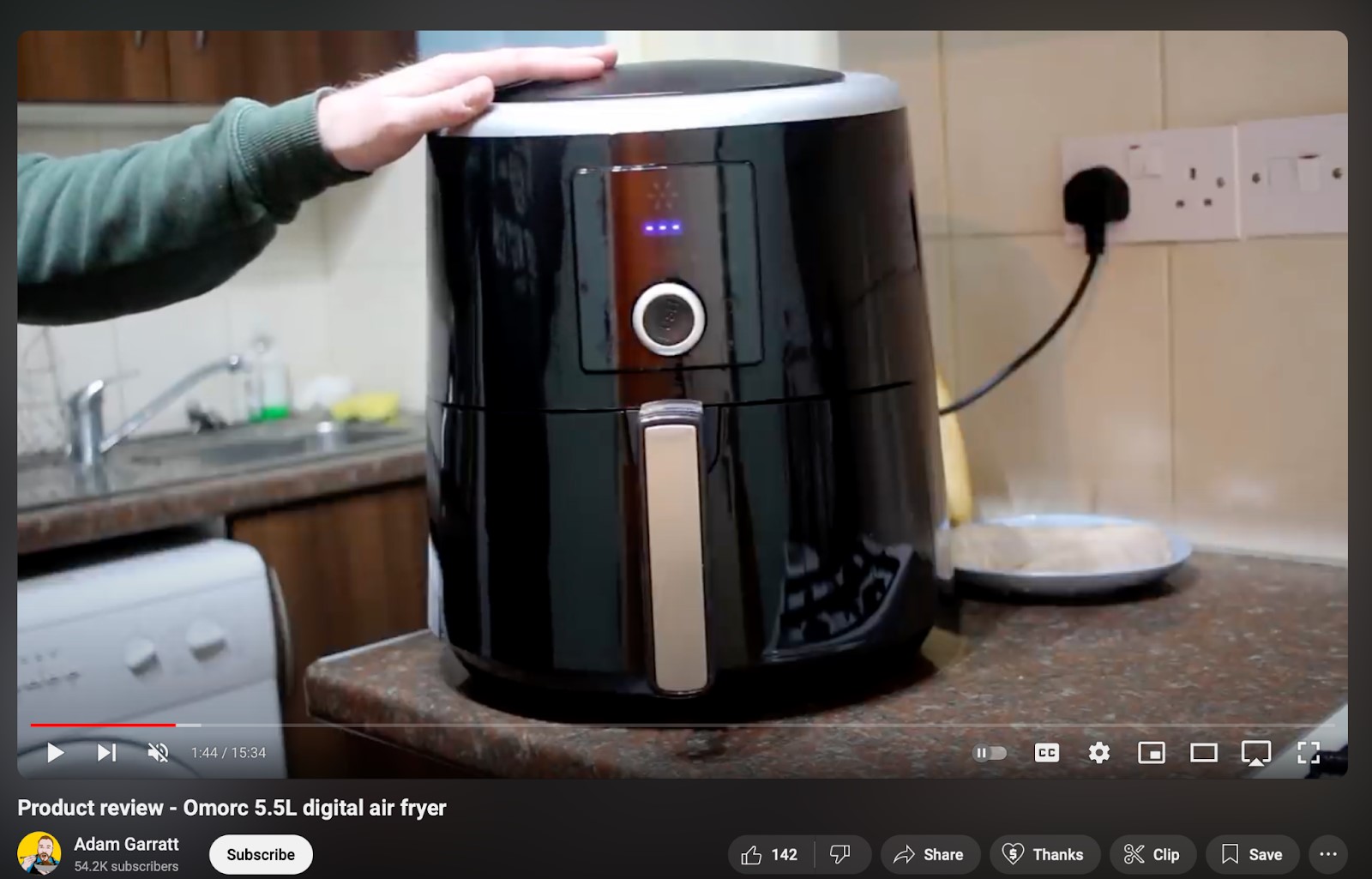
Time to put your PR lens on and find a charismatic, knowledgeable representative of your brand. Maybe it’s your CEO, CFO, or a product manager who helped create your SaaS tool.
Interview affiliate videos involve a prominent affiliate in a particular industry interviewing a brand about their experience in that industry, the latest updates in their company, or specifics about a new product.
This is a great way to personalize your brand for your target audience. You might see YouTube affiliate interview videos, but podcasts are also becoming more popular.
For example, a SaaS brand might want to get in touch with influencers in the industry for a podcast interview. One example is Nathan Latka, an entrepreneurial podcast host who interviews various SaaS startup founders on how they grew their brands.
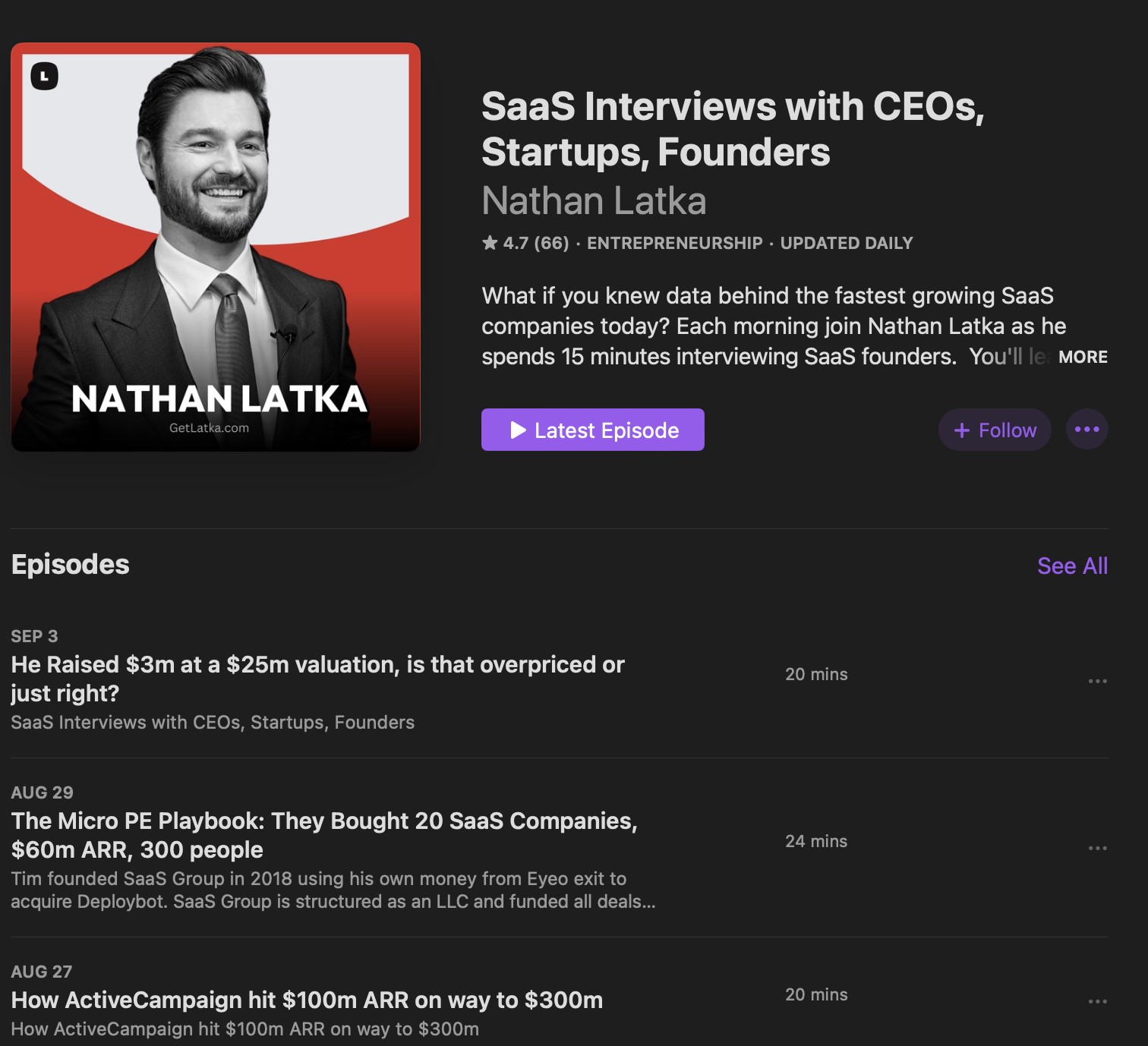
Source: Apple
Unboxing videos are videos of an affiliate opening a package of products from a brand. Walmart has a large affiliate network, and you can find tons of its affiliates on social media, with unboxing videos of its products.
For example, this lifestyle affiliate, Ari Zapata, created an engaging unboxing video of her daughter unboxing a collection of school-related products from Walmart:
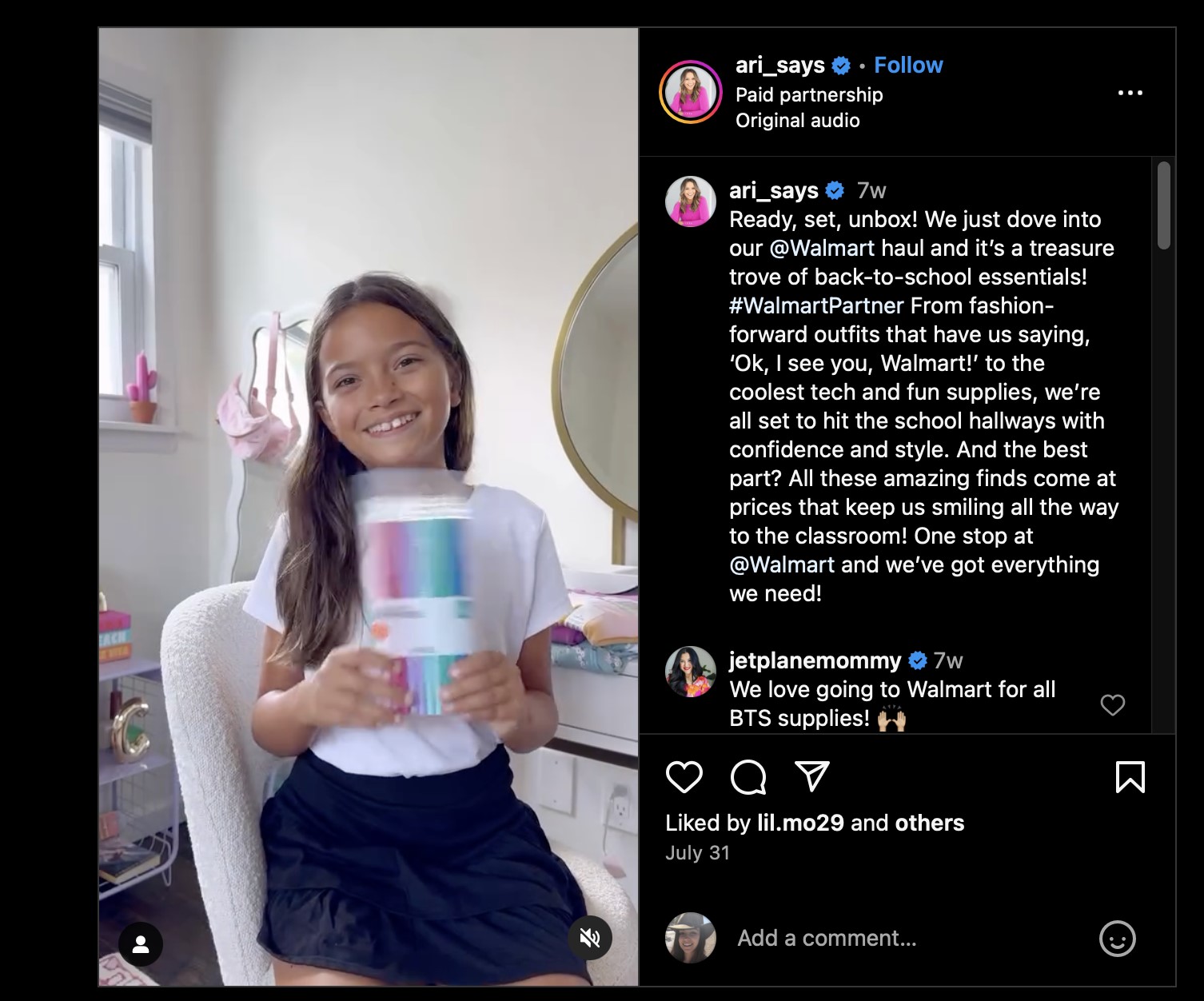
This is a great way to showcase multiple products within one video, which might encourage more purchase decisions from your target audience. If they aren’t keen on one product, they might desire another product more.
Product comparison videos help your target audience visualize what makes your product better than your competitors. Affiliates would essentially conduct two product reviews within one video for a comparison — your product and one from your competitors. They’ll stack up the two products and compare things like:
Of course, you’ll want to encourage your affiliate to highlight as many of your product’s benefits as possible to ensure audience members don’t slip away to your competitors instead!
Comparison videos might compare two products, or they might highlight multiple products and compare them. Here’s an example of a comparison video that highlights top 5 body massagers:
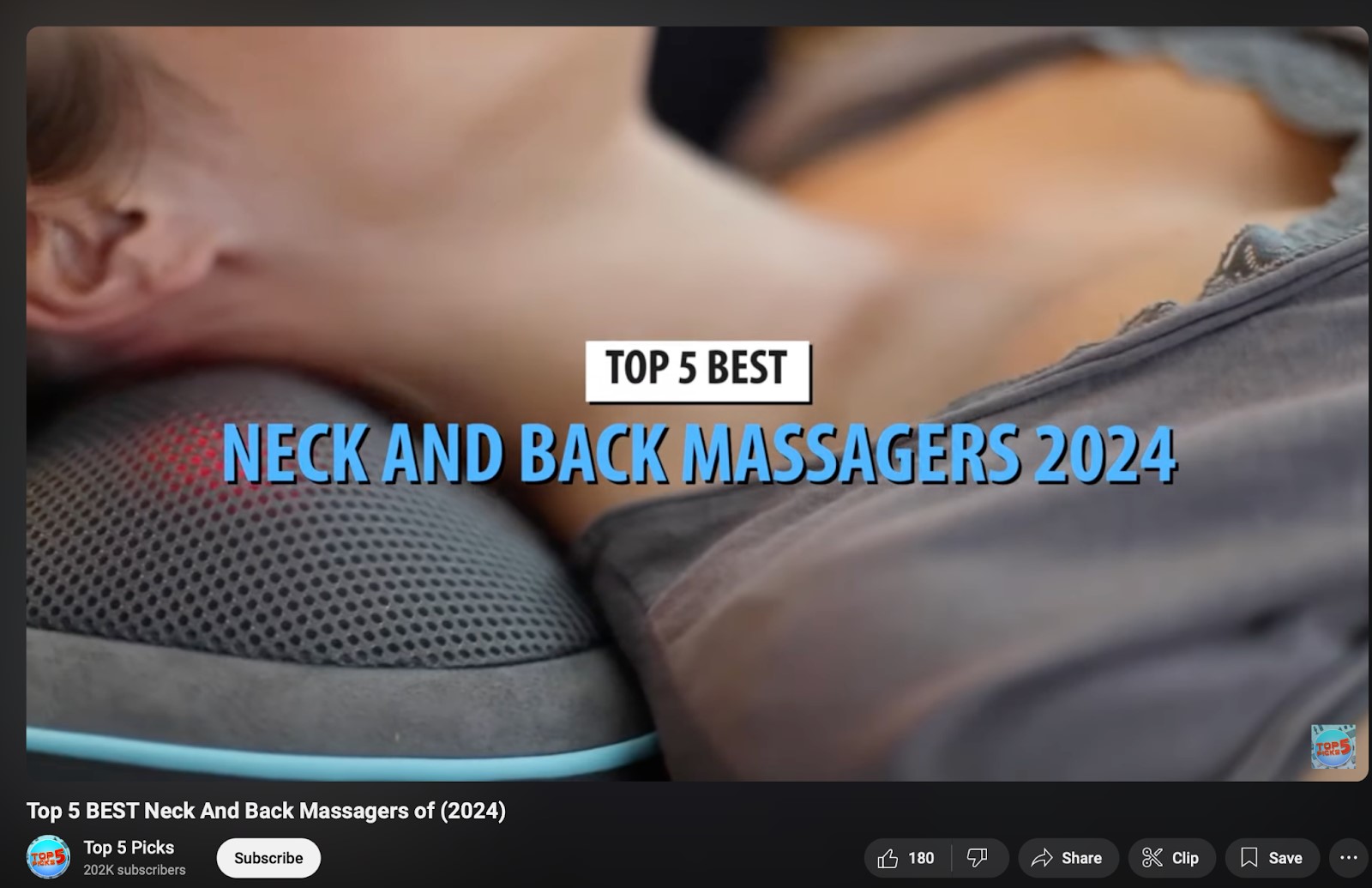
Source: YouTube
Do you have a SaaS product with tons of features? A prospective subscriber might browse through those features on your website, but written lists and descriptions don’t communicate as much as video demonstrations.
Tutorials are great affiliate marketing video options that help SaaS brands showcase their product to relevant audiences. For example, here’s one tutorial for accounting software Honeybook by Design By Laney, an entrepreneurial coach and affiliate.
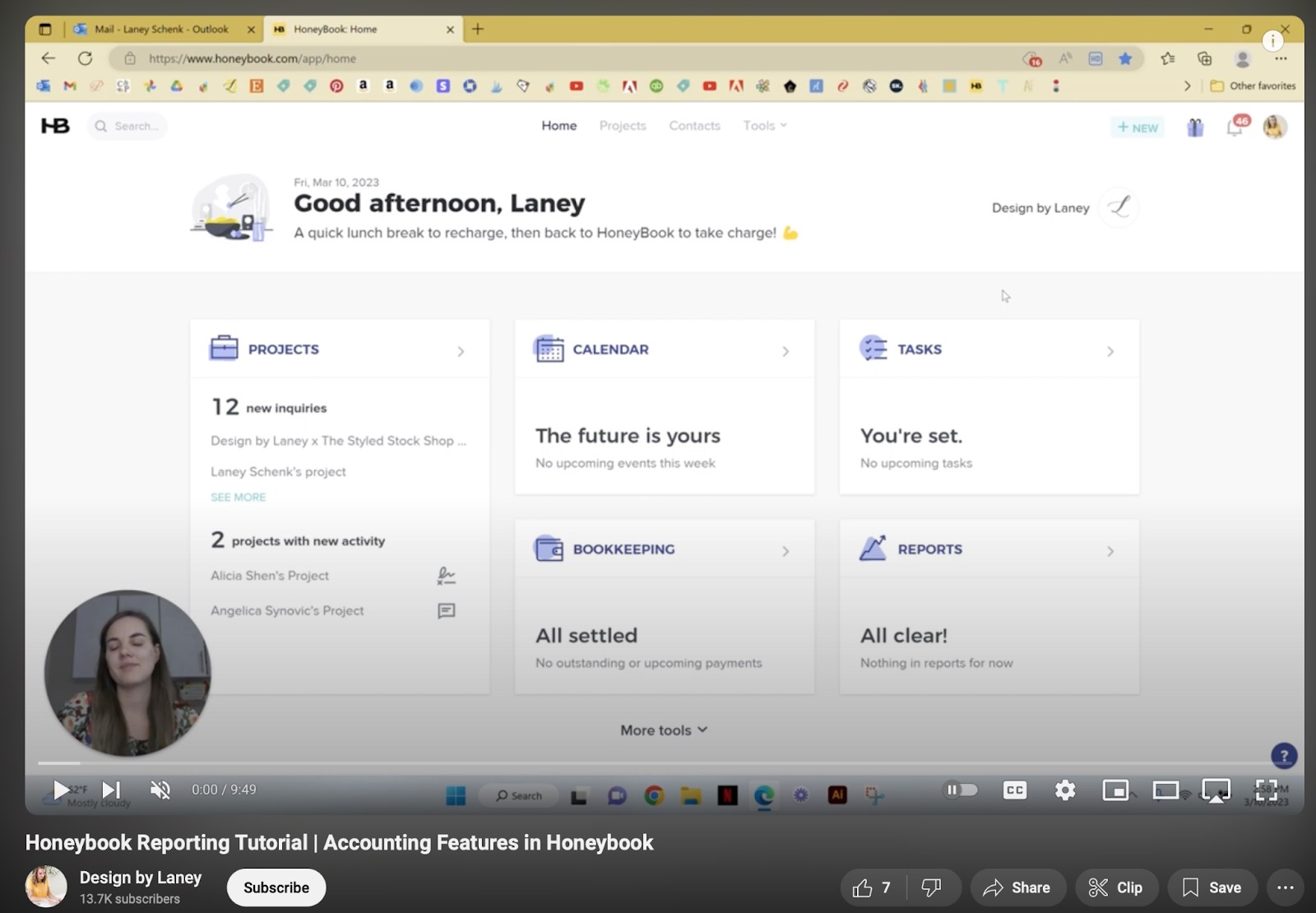
Her video format is ideal for a SaaS product like Honeybook. She records the screen with a webcam using the platform and walks through its features while promoting audience trust and familiarity.
If you check out Honeybook’s affiliate program details, you’ll see that affiliates can earn up to $300 per referral. This feels pretty beneficial for the affiliate but remember — Honeybook subscriptions are ongoing and bring the company anywhere from $16 to $66 monthly.
Over time, the brand would certainly make up the flat-fee commission as long as it continues to meet its customers’ needs.
Giveaways are a great way to engage affiliates’ audiences and promote your products at the same time. When affiliates post giveaways, they build hype and excitement about your products. You’ll likely garner more social media followers and impressions based on the giveaway guidelines.
Moreover, you might even tap into an entirely new target audience. People love free stuff, and many follow Instagram tags like #giveaway. And if they win your affiliate giveaway, who knows — they might like your product so much that you gain a new lifetime customer.
Here’s a quick look at all the social media content you can see related to giveaways with a basic search on Instagram:
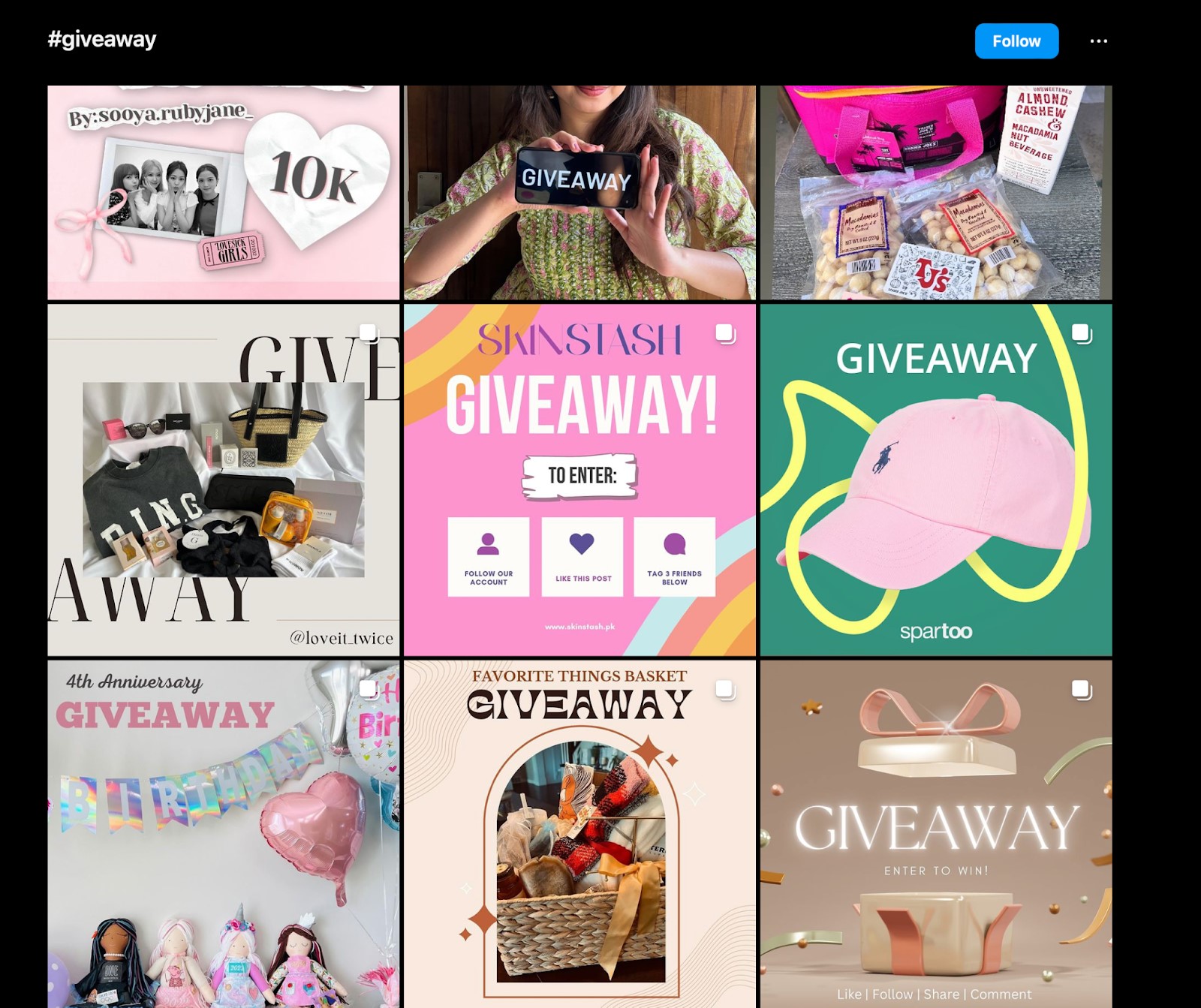
Source: Instagram
Affiliate video marketing is a hefty process, but you can succeed with a content plan and these three tips:
It’s up to you and your affiliates on how much each party takes on when it comes to video production.
Our advice? Don’t leave all the work to your affiliate. While this is common, you’ll see better affiliate relationships if they feel you support them in any way you can.
Even if you don’t film them with your product, you can still give them product specs and benefits to touch upon, as well as images and infographics to enhance their video.
Some affiliates have massive followings that garner serious views and engagement for your brand’s affiliate videos. However, that’s not always the case.
For example, micro-influencers might reach your target audience — but you can enhance results with pay-per-click (PPC) ads, email marketing newsletters with the latest videos, posting on your brand’s social media account, and more.
Audience research is key here, as you want to make sure you invest promotional tactics into channels and methods that you know your audience will be receptive to.
Everyone seeks a product recommendation before they make a purchase. Just conduct a quick Google search for the “best product for X Reddit,” and you’ll see tons of threads that might be relevant to your brand.
You might also check Quora for more of your target audience, and encourage your affiliates to post on these platforms to reach more engagement and conversions on your videos.
Here’s an example of someone searching for product recommendations for toasters on Reddit:

While it’s not 100% clear if the responses come directly from affiliates, it’s interesting to note that one response highlights an affiliate as a resource:
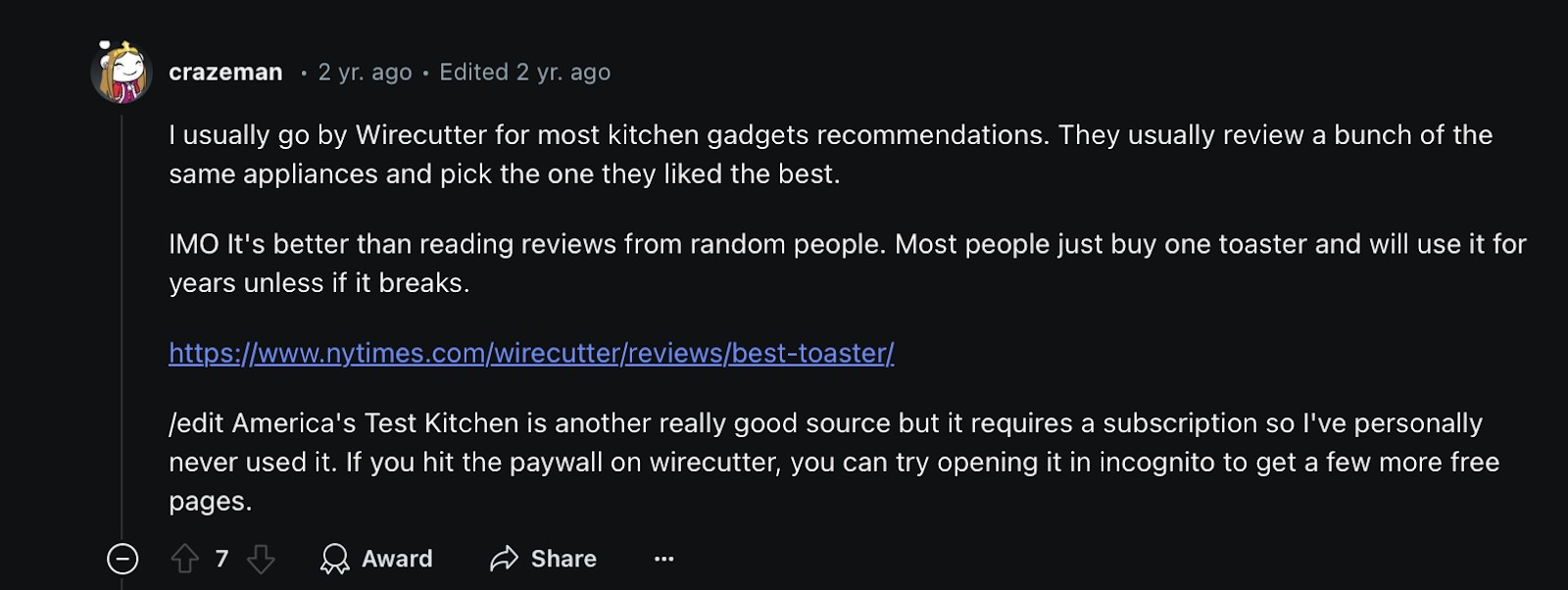
Source: Reddit
Subtitles assist viewers who are deaf or hard of hearing and cater to those who prefer watching videos without sound, such as in public places. Learn how to add subtitles to a video to enhance viewer engagement and inclusivity.
Social media analytics can tell you about your video performance — however, they don’t include insights on your affiliates. An affiliate marketing software can help you organize your affiliate program and gain insights across your entire content strategy, rather than having everything siloed by relying solely on social media analytics.
Affiliate management tools have real-time tracking capabilities to help you keep tabs on your affiliate campaigns. Each platform might have different tracking methods, but they might include:
Most affiliate marketing platforms have a reporting dashboard to display metrics with filters that matter most to your campaigns and brands. Find out how each affiliate marketing video performs over time, which affiliates have the most engagement or conversions from their videos, which channels are most profitable, and more.
Affiliate marketing videos are a must at a time when people consume so much video content and are more easily convinced to make a purchase with them. They’re also a great way to diversify your content strategy and garner more conversions in your affiliate program.
However, the best way to leverage affiliate marketing videos is to keep improving them. Track video engagement specs across different affiliates and platforms, and communicate easily with your affiliates right on our platform.